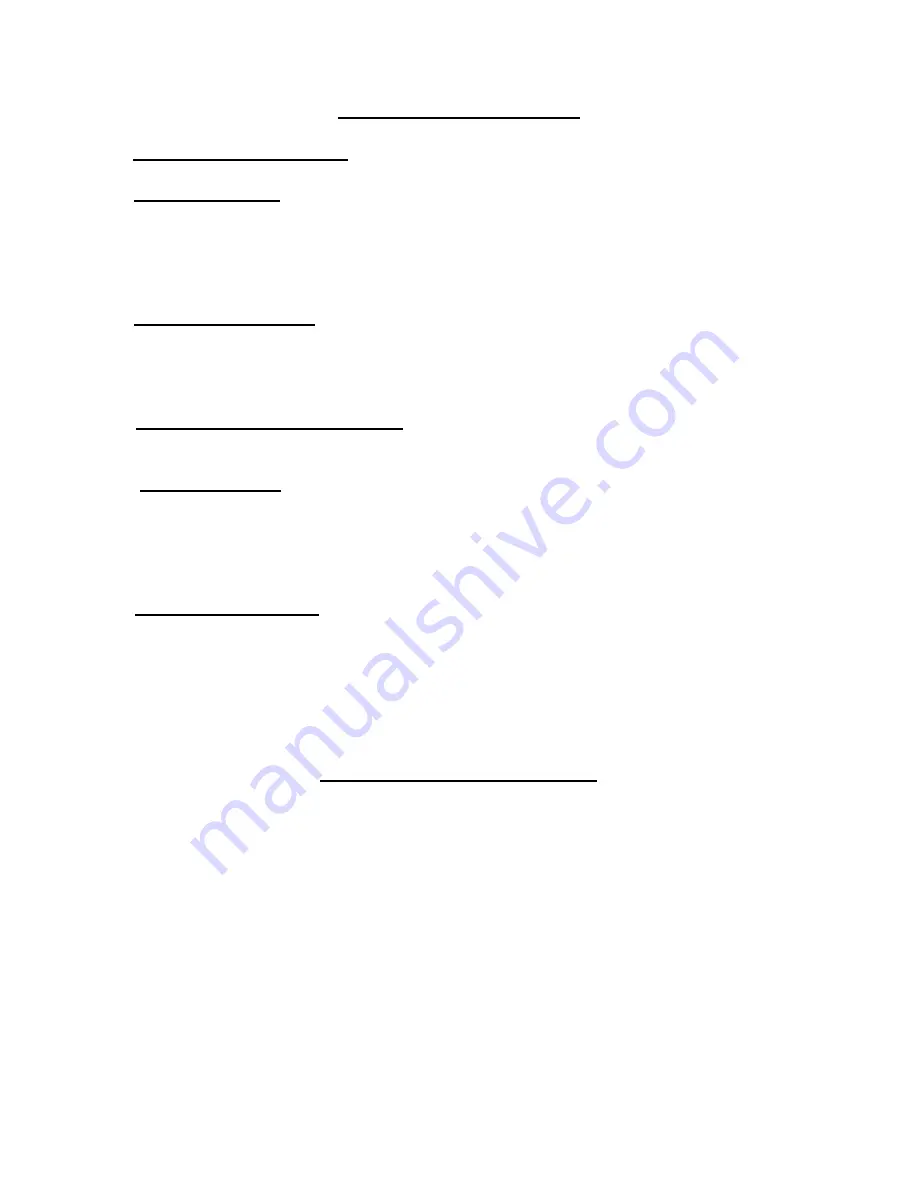
5.4
STARTING THE ENGINE
1.
OPEN THE FUEL VALVE:
Turn fuel valve lever right 1/4 turn.
2.
CHOKE ENGINE:
Move engine or remote choke control to position lever in "choke"
position.
NOTE:
This should fully close choke on carburetor. If it does not, remote control must be
readjusted to enable full travel of the choke lever.
3.
TURN ENGINE "ON":
Position kill switch on engine to "ON" and place the machine
on/off switch on the remote control box to "ON". When the remote box switch is "ON",
the green L.E.D. on the remote box should glow indicating power to the remote
box.
4.
TURN SPRAY OUTPUT "OFF":
Verify that the spray on/off switch on the remote
control box is in the "OFF" position.
5.
START ENGINE:
Activate the spring-loaded start switch on the remote box to start
the engine.
NOTE:
To prevent overheating the engine starter motor, do not activate the motor longer than
15 seconds at a time.
6.
SET ENGINE SPEED:
Allow the engine to warm-up and gradually move the choke
lever to the "unchoked" position. Adjust the engine throttle control to achieve the
desired BOOM PRESSURE. (See Tables 1 and 2, Section 7.0)
DO NOT EXCEED 8.5 PSI BOOM PRESSURE
6.0
MEASURING LIQUID VISCOSITY
In order to achieve consistent results in generating aerosols with a volume median
diameter (VMD) in the sub 20 micron range, several variables must be kept under
control at the same time. The ability of an aerosol generator to consistently break up a
liquid into appropriate sized droplets depends on (3) key elements:
1. The available energy flow (air flow) through the nozzle is governed by the blower
speed. As the air mass and its velocity through the nozzle decreases, the droplet
size (VMD) will increase assuming that the liquids viscosity and flow rate remains
constant.
2. The flow rate of the liquid governed by the speed of the liquid pump.
18
















































